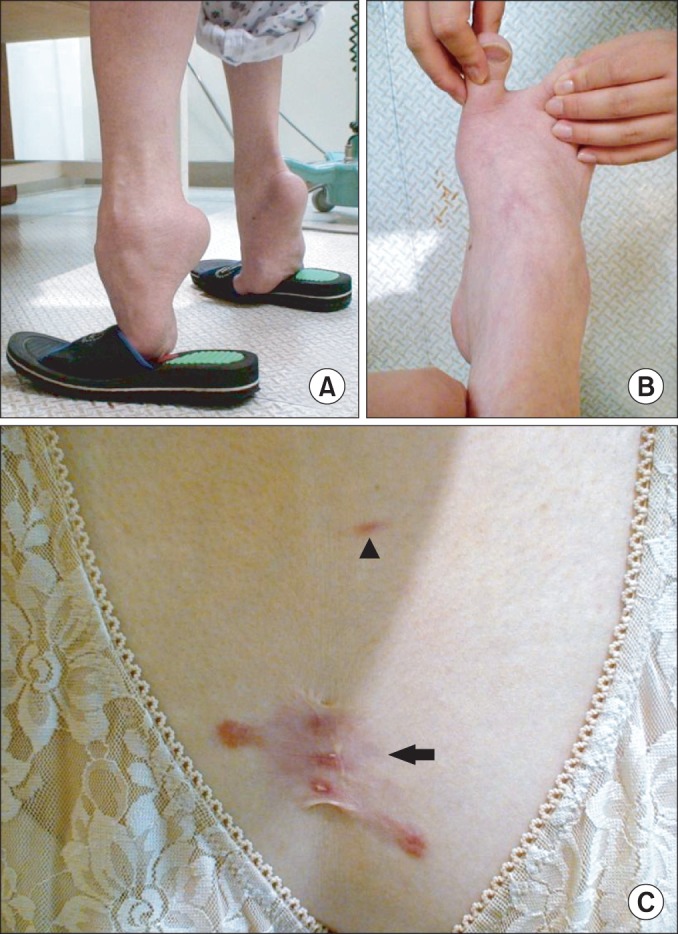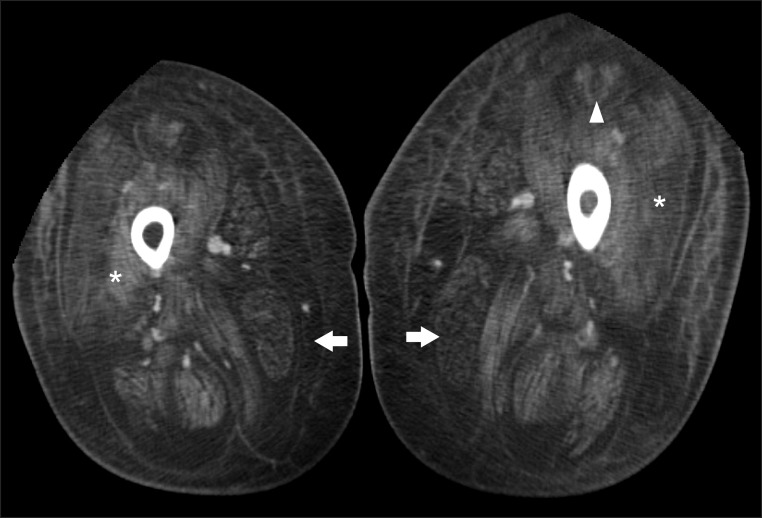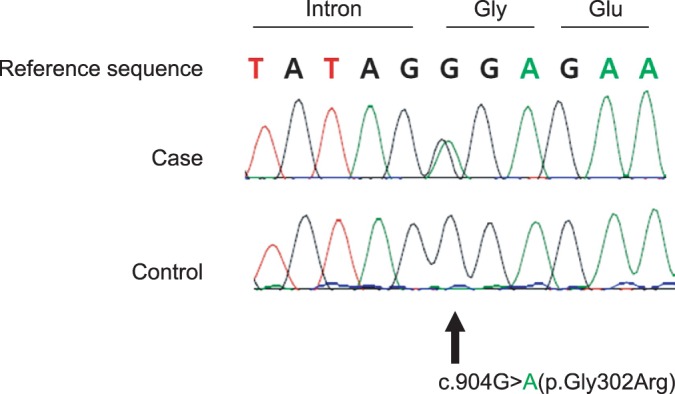Ann Rehabil Med.
2014 Apr;38(2):292-296.
Ullrich Congenital Muscular Dystrophy Possibly Related With COL6A1 p.Gly302Arg Variant
- Affiliations
-
- 1Department of Physical and Rehabilitation Medicine, Samsung Medical Center, Sungkyunkwan University School of Medicine, Seoul, Korea. yays.sung@samsung.com
- 2Department of Laboratory Medicine and Genetics, Samsung Medical Center, Sungkyunkwan University School of Medicine, Seoul, Korea.
- 3Department of Physical and Rehabilitation Medicine, Keimyung University Dongsan Medical Center, Daegu, Korea.
Abstract
- Ullrich congenital muscular dystrophy (UCMD) is characterized by congenital weakness, proximal joint contractures, and hyperlaxity of distal joints. UCMD is basically due to a defect in extra cellular matrix protein, collagen type VI. A 37-year-old woman who cannot walk independently visited our outpatient clinic. She had orthopedic deformities (scoliosis, joint contractures, and distal joint hyperlaxity), difficulty of respiration, and many skin keloids. Her hip computed tomography showed diffuse fatty infiltration and the 'central shadow' sign in thigh muscles. From the clinical information suggesting collagen type VI related muscle disorder, UCMD was highly considered. COL6A1 gene sequencing confirmed this patient as UCMD with novel c.904G>A (p.Gly302Arg) variant. If musculoskeletal and dermatologic manifestations and radiologic findings imply abnormalities in collagen type VI network, COL6A related congenital muscular dystrophy was to be suspected.
Keyword
MeSH Terms
Figure
Reference
-
1. Rao C, Mallikarjuna HB, Mohan Kumar N. Case report on Ullrich congenital muscular dystrophy-type VI collagen defect. Curr Pediatr Res. 2010; 14:153–156.2. Lampe AK, Bushby KM. Collagen VI related muscle disorders. J Med Genet. 2005; 42:673–685. PMID: 16141002.
Article3. Kim DS. Diagnostic significance of immunohistochemical staining in muscular dystrophy. J Korean Neurol Assoc. 2006; 24:1–13.4. Suh BC, Choi YC, Kim SM, Choi BO, Shim DS, Lee DH, et al. A family of Bethlem myopathy. J Korean Neurol Assoc. 2006; 24:614–617.5. Allamand V, Brinas L, Richard P, Stojkovic T, Quijano-Roy S, Bonne G. ColVI myopathies: where do we stand, where do we go? Skelet Muscle. 2011; 1:30. PMID: 21943391.
Article6. Mercuri E, Clements E, Offiah A, Pichiecchio A, Vasco G, Bianco F, et al. Muscle magnetic resonance imaging involvement in muscular dystrophies with rigidity of the spine. Ann Neurol. 2010; 67:201–208. PMID: 20225280.
Article7. Sparks S, Quijano-Roy S, Harper A, Rutkowski A, Gordon E, Hoffman EP, et al. Congenital muscular dystrophy overview. In : Pagon RA, Adam MP, Bird TD, Dolan CR, Fong CT, Smith RJ, editors. GeneReviews [Internet]. Seattle, WA: University of Washington;1993-2014. cited 2014 Feb 15. Available from: http://www.ncbi.nlm.nih.gov/books/NBK1291/.8. Valencia CA, Ankala A, Rhodenizer D, Bhide S, Littlejohn MR, Keong LM, et al. Comprehensive mutation analysis for congenital muscular dystrophy: a clinical PCR-based enrichment and next-generation sequencing panel. PLoS One. 2013; 8:e53083. PMID: 23326386.
Article9. Park YE, Kim TH, Kim HS, Kim DS. A case of sporadic Ullrich congenital muscular dystrophy caused by a COL6A1 mutation. J Korean Soc Clin Neurophysiol. 2010; 12:27–31.
- Full Text Links
- Actions
-
Cited
- CITED
-
- Close
- Share
- Similar articles
-
- Novel recessive mutations of COL6A1 identified in the early severe phenotype of ullrich congenital muscular dystrophy
- A Family of Bethlem Myopathy Caused by a Heterozygous COL6A1 Mutation
- Clinical, Pathologic, and Genetic Features of Collagen VI-Related Myopathy in Korea
- Infantile-Onset LMNA-Related Congenital Muscular Dystrophy Presenting as Torticollis: A Case Report
- A Case of Ullrich's Disease




